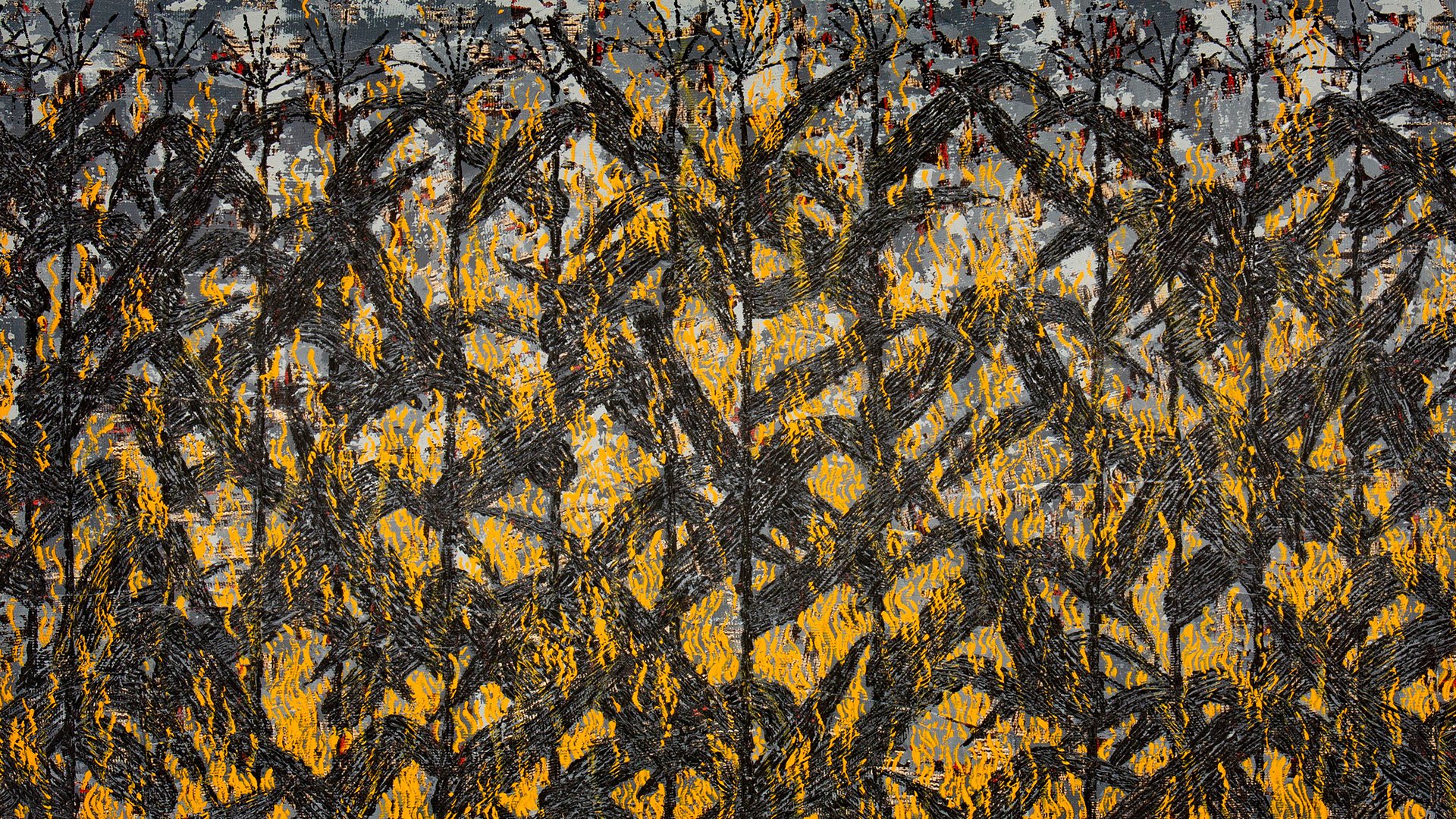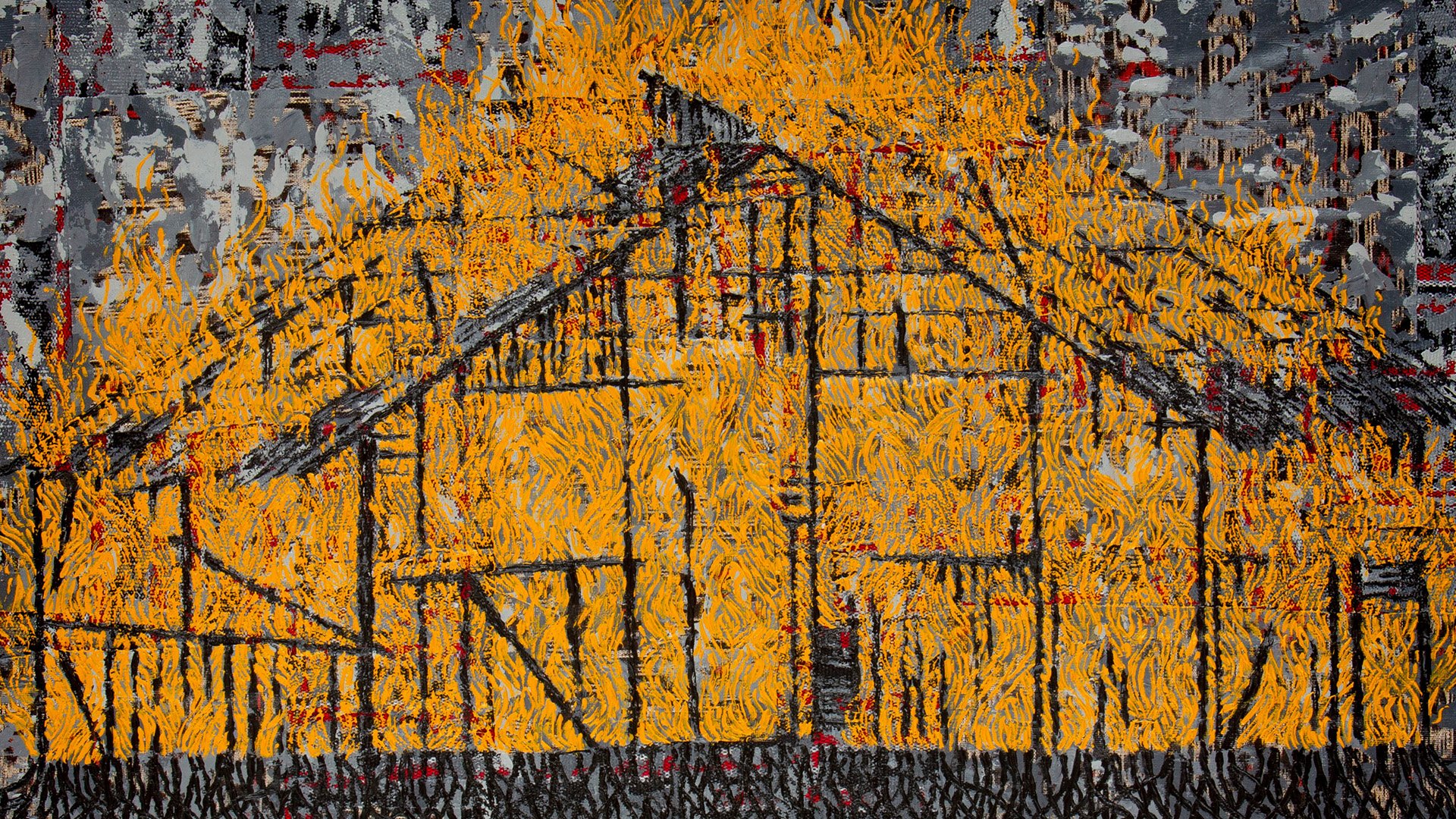
Mise-en-scène
Lagablab sa Hardin ng Digma is an evocative artistic exploration that delves into the experiences of indigenous communities facing enduring crises. Through a series of scenes, I aim to capture the contrasting emotions and realities that unfold within these communities, reflecting the cycles of peace, disruption, destruction, resilience, and the pursuit of justice.
Pahinga
Acrylic on Traditional Hand-woven Cloth
15x15 in
The setting commences with a moment of calm and respite, symbolized by "Pahinga." Within this serene atmosphere, the rituals of daily life unfold, where rice is cooked over an open fire, permeating the air with a comforting aroma. The act of lighting a lamp, "Liwanag sa Dilim," becomes a metaphorical rebellion against darkness and a source of solace. The crackling firewood and the laughter and songs shared emphasize the warmth and unity found within these communities.
Liwanag sa Dilim
Acrylic on Traditional Hand-woven Cloth
15x15 in
However, the tranquility is abruptly shattered by the arrival of "Hudyat." Supper is replaced by a disconcerting noise, a harbinger of impending turmoil.
Hudyat
Acrylic on Traditional Hand-woven Cloth
18x11 in

Ugong ng mga Patlang
Acrylic on Traditional Hand-woven Cloth
24x48 in
The metaphorical fire that breaks out in the fields of maize, "Ugong ng mga Patlang," symbolizes destruction and upheaval. The sound becomes an alarm, resonating with the chaos and uncertainty that engulfs these communities.
Sinong Nagpakawala sa Pusa? II
Acrylic on Traditional Hand-woven Cloth
24x24 in
Sinong Nagpakawala sa Pusa? III
Acrylic on Traditional Hand-woven Cloth
24x24 in
Sinong Nagpakawala sa Pusa? I
Acrylic on Traditional Hand-woven Cloth
24x24 in
In the midst of this turmoil, the question arises, "Sinong Nagpakawala sa Pusa?"—Who set the cat alight? This act of cruelty, also prevalent in urban poor areas, represents the deliberate harm inflicted upon vulnerable beings. The flames engulf not only the felines but also the lightweight houses, transforming communities into death zones, often leaving no trace of the perpetrators.
Despite the devastation, the spirit of resilience persists, portrayed through the warm embrace of "Sa Higpit ng mga Bigkis." Even in the face of unimaginable loss, the roots remain firmly planted, symbolizing the unwavering commitment to bear witness and seek justice. This resilience reflects the indomitable spirit of the indigenous peoples who refuse to be defeated. For the few still alive, there is nowhere to go. Rooted firmly to the ground, still ready to bear witness as death fertilizes the land, “Hindi Matitinag.” One day, there will be justice.
Sa Higpit ng mga Bigkis I, II, III
Acrylic on Traditional Hand-woven Cloth
32x22 in

Hindi Matitinag
Acrylic on Traditional Hand-woven Cloth
36x48 in
Material
The backdrop where the scenes occur is a compendium of the enduring crises against indigenous peoples. Woven textiles from the north and the south are deliberately covered by patches, representing the struggles to preserve cultural integrity despite deliberate erasure. These textiles carry the nuances of their cloth, showcasing a cultural identity that persistently seeks visibility, even in the face of deliberate attempts at erasure. Across their shared experience is the encroachment of their spaces by uniformed forces.
The colorway of their uniforms cannot hide the intent to seep through ancestral lands and other places where they do not belong. Instead of green, their uniform is gray – like the ash they leave behind as they scorch the earth with fear and firepower that was never meant to protect.
In an ultimate irony, the military uniform is historically based on the natural adaptation of camouflage used by plants and animals in order to survive. The bringer of death imitates life.
Lagablab sa Hardin ng Digma illustrates fire, wood, glass, and grains as objects of indigenous and universal importance, weaponized. Fire also creates, in a way that is unmistakable, even violent, a courage that remembers all who once burned.
Archie Oclos
About the Artist
Archie Oclos (b. 1989) is an artist rooted in constant engagement with disadvantaged communities all over the archipelago. Through the privilege of understanding contexts on the ground, his works reflect the realities of social injustice. As he also comes from a family of farmers and laborers, Archie also tells of personal narratives overt (figurative) and abstract (non-figurative), that seem much closer to home.
He has participated in international exhibits (10th Asia Pacific Triennial, QAGOMA, 2021-2022); and won accolades: Ateneo Art Awards (Winner, 2019); Thirteen Artist Award (2018); and Forbes 30 Under 30 (2017 & 2018).
In his spare time he takes long bike rides, and takes care of his cats.

